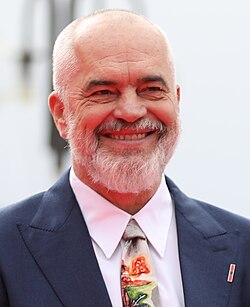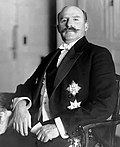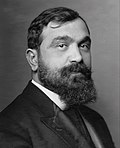| Prime Minister of Republic of Albania | |
|---|---|
| Kryeministri i Shqipërisë | |
 | |
| Style | His Excellency (diplomatic) |
| Type | Head of government |
| Member of | |
| Residence | Kryeministria |
| Seat | Tirana |
| Appointer | President with Parliament confidence |
| Term length | Four years, renewable |
| Constituting instrument | Constitution of Albania |
| Inaugural holder | Ismail Qemali |
| Formation | 4 December 1912 |
| Deputy | Deputy Prime Minister |
| Salary | L228,730 [1] |
| Website | kryeministria |
The prime minister of Albania, [a] officially the prime minister of the Republic of Albania, [b] is the head of government of Albania. The office of the prime minister is a core institution in the politics of Albania formed after the Albanian declaration of independence on 28 November 1912. Since that time, the nation has navigated a dynamic political evolution spanning distinct periods, encompassing a monarchy, a communist regime and the eventual democratic order. In 1912, Ismail Qemali was inaugurated as the first prime minister of Albania, guiding the nation toward sovereignty amidst the complex conditions in the Balkans. In 1944, Enver Hoxha implemented a radical change in government, transforming Albania into an authoritarian and isolationist communist regime. In 1991, the nation transitioned into a democracy that marked a notable shift, when Fatos Nano emerged as the first post-communist prime minister of Albania.
Contents
- History
- 1912–1990
- 1991–present
- Appointment
- Functions
- List
- Timeline
- See also
- Notes
- References
- Sources
The office of the prime minister is defined by the constitution of Albania. The appointment begins with general elections, during which parties or political coalitions nominate candidates for the parliament. The leader of the party with the most parliamentary seats becomes a contender for the office of the prime minister. After the results are certified, the president invites the majority leader to propose a prime ministerial candidate who must secure a majority from the parliament for selection. Once selected, the prime minister-elect is mandated to partake in a formal oath-taking ceremony presided over by the president. The prime minister is in charge of forming and guiding the council of ministers, presenting the nation's integral policies and coordinating government institutions. Located in Tirana, the Kryeministria is the official workplace of the prime minister and holds a crucial role in facilitating their duties and those of the council. Since September 2013, Edi Rama from the Albanian Socialist Party has served as prime minister.












































